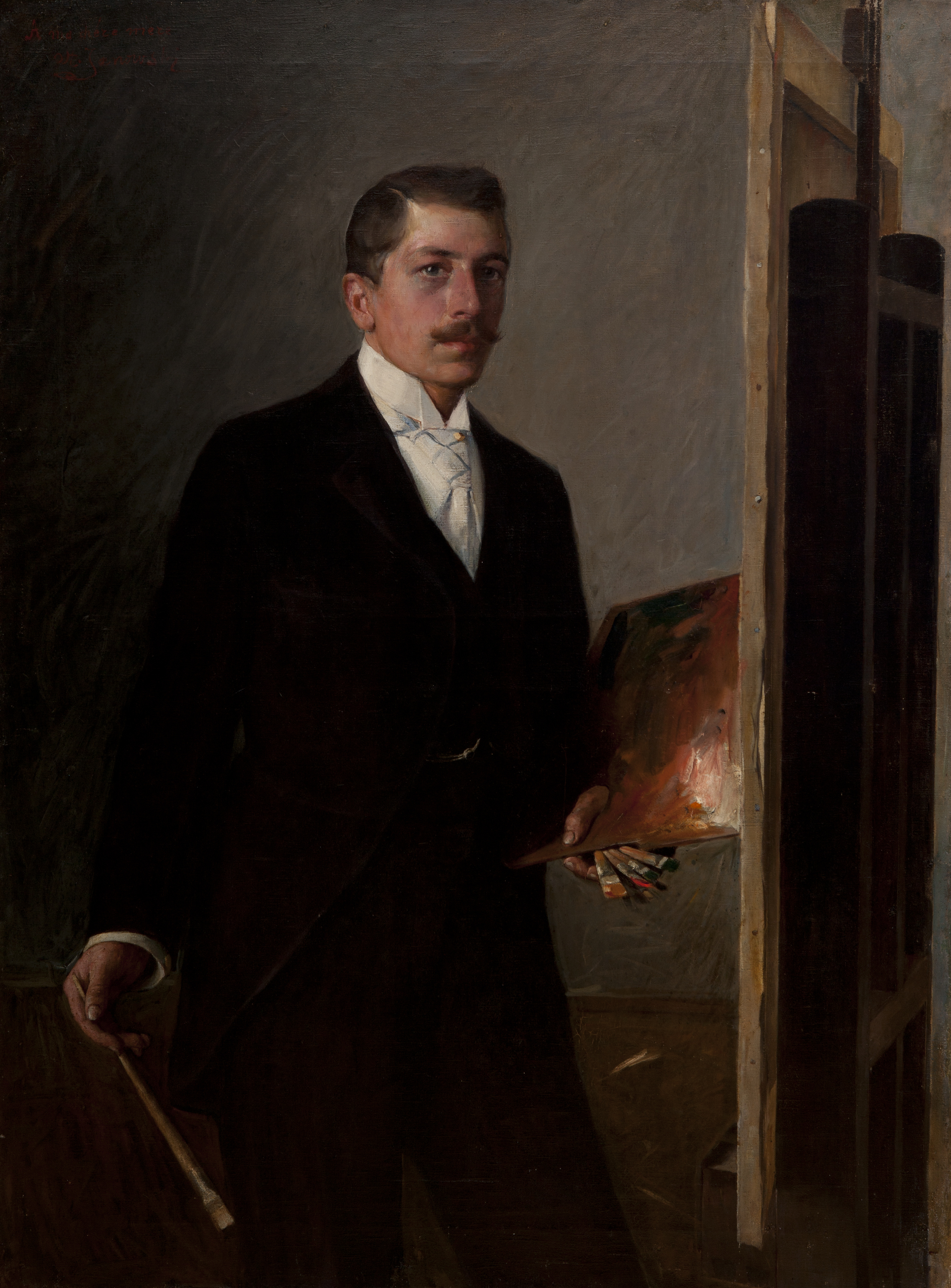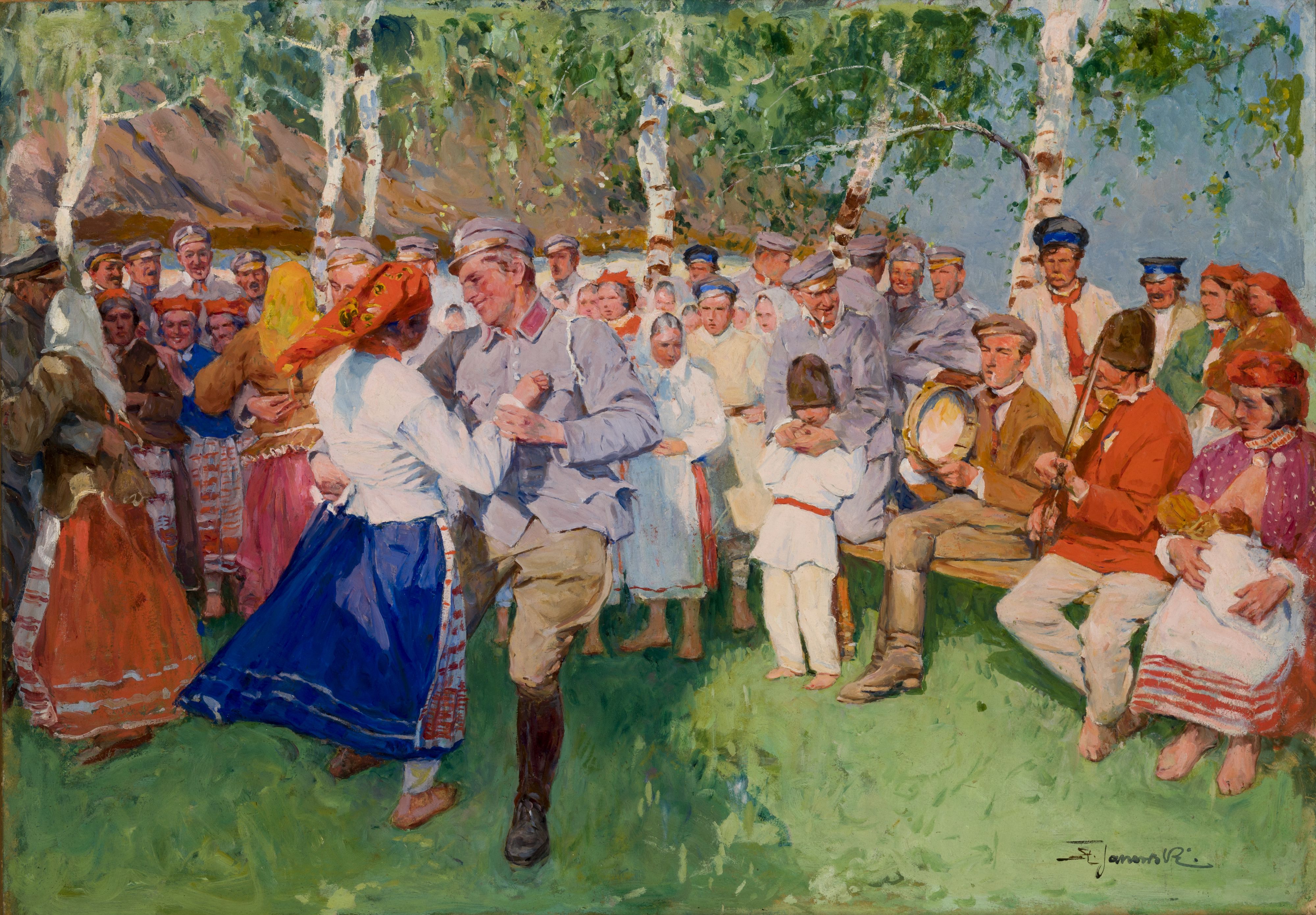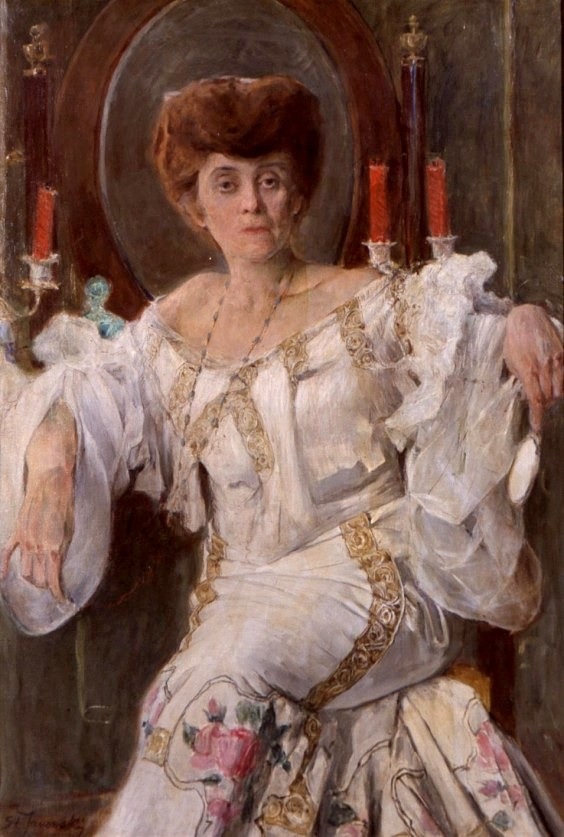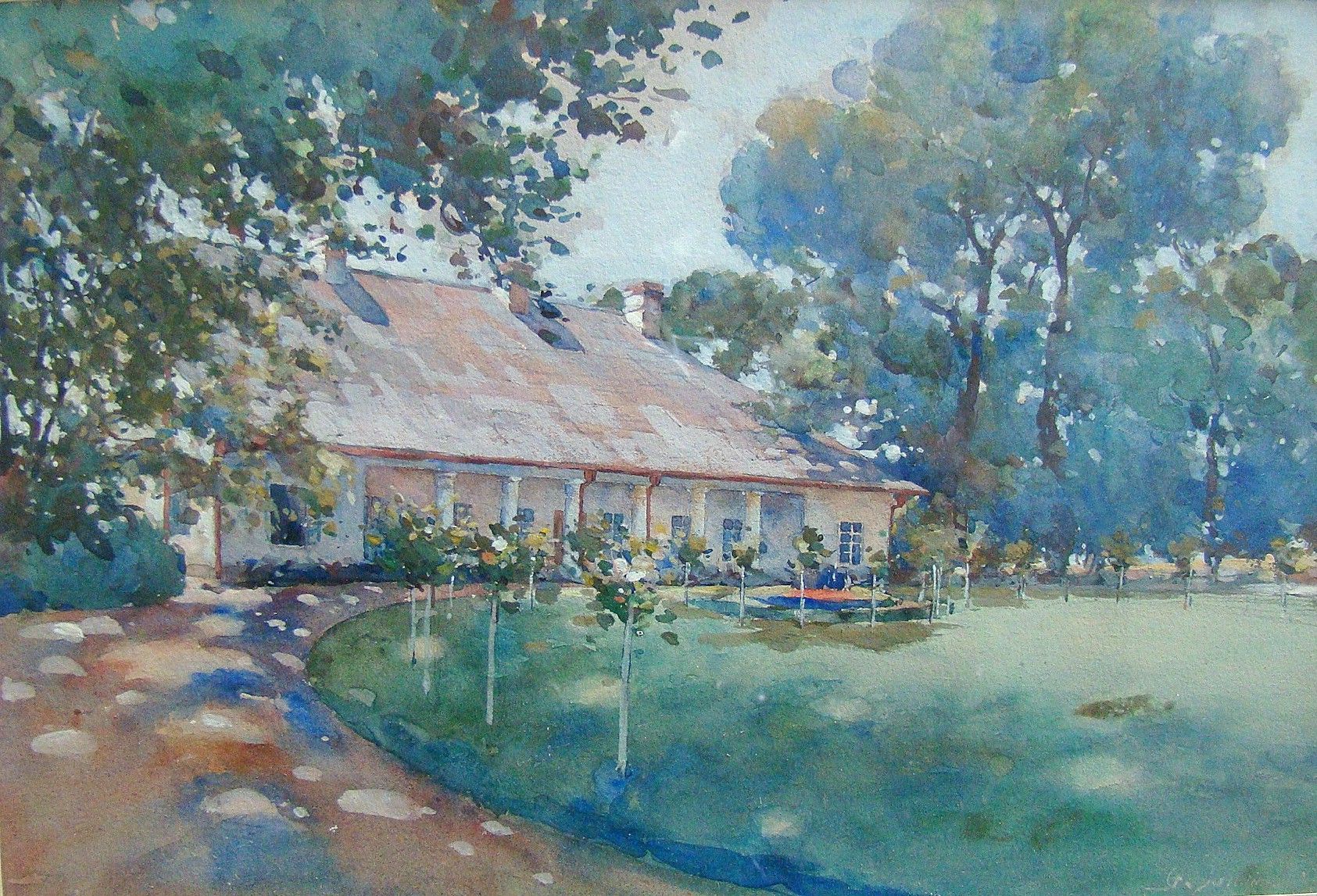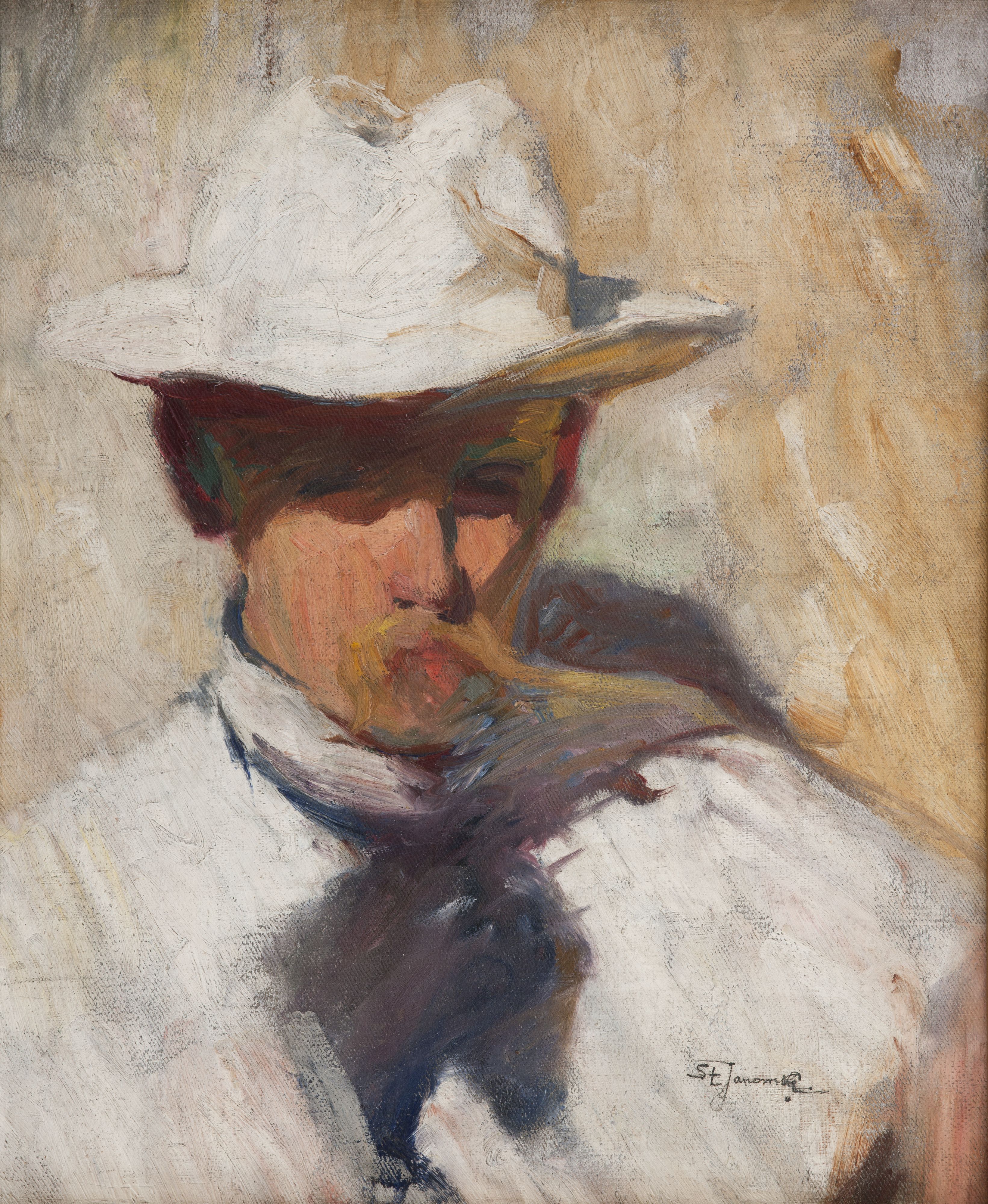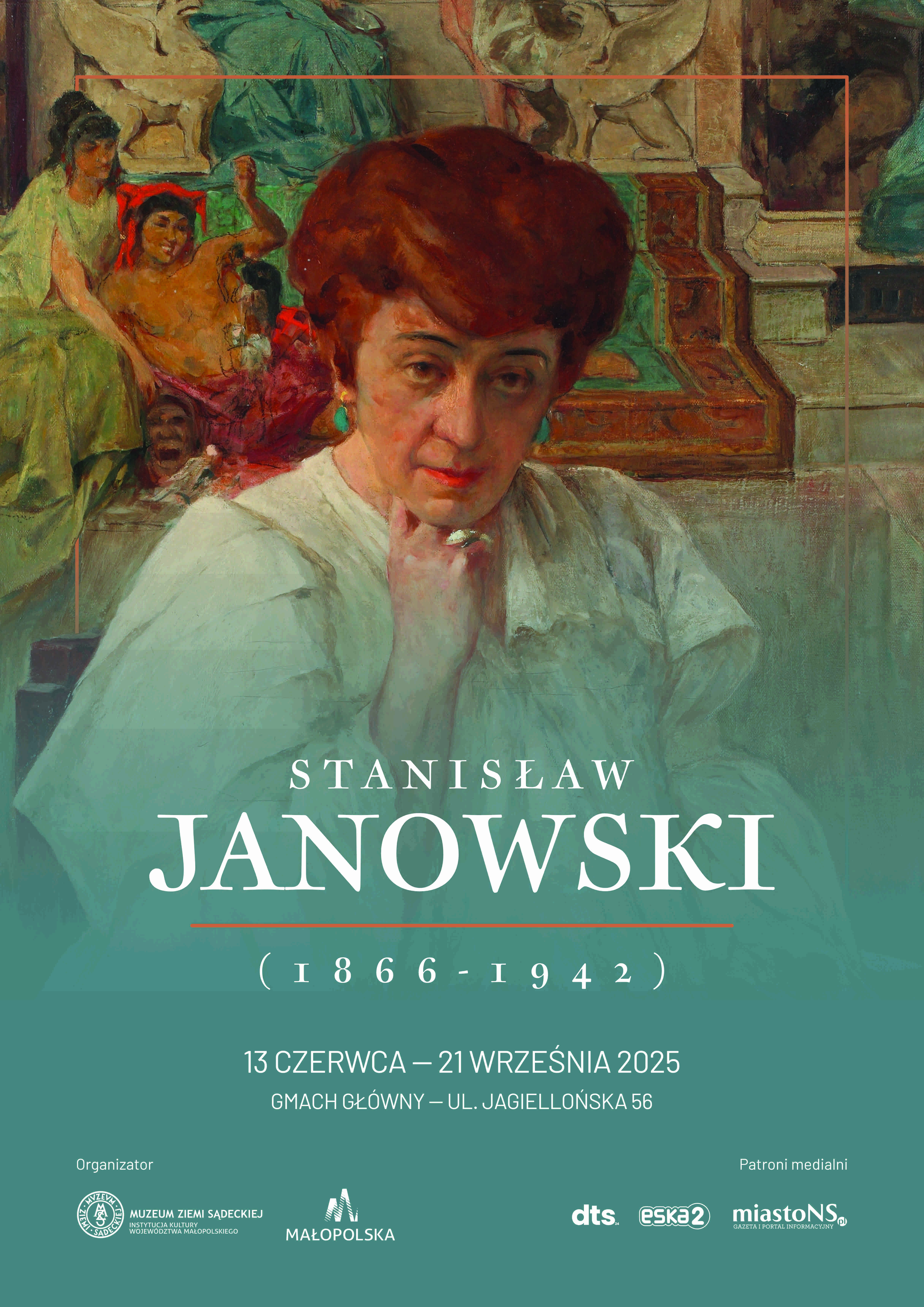Exhibition
Stanisław Janowski (1866-1942)
Stanisław Janowski was born on October 9, 1866 in Kraków. Two years after his birth, his sister, Bronisława, was born, a later painter. At the age of 16, he enrolled in the preparatory department at the Kraków School of Fine Arts, where he studied in the studios of Feliks Szynalewski, Izydor Jabłoński, and Władysław Łuszczkiewicz. In the years 1886-1890, he studied at the Royal Academy of Fine Arts in Munich with: Johann Caspar Herterich - a representative of historical and genre painting, and Alexander Liezen-Mayer - a historical painter and illustrator.
After completing his studies, he returned to Kraków, where, in addition to painting, he also worked as an illustrator. He began a long-term collaboration with the biweekly "Świat" and the weekly "Kłosy". Later, he also created illustrations for "Biesiada Literacka" and "Tygodnik Ilustrowany". In the years 1894-1896, together with Ludwik Boller and a team of painters, he created the Tatra Panorama, one of his most important works. After marrying Gabriela Zapolska in 1901, he also created illustrations for her plays, organized performances of a traveling theater presenting Zapolska's works, and created stage designs. After parting ways with the writer in 1910, Stanisław devoted himself to intensive painting. Together with his sister, Bronisława Rychter-Janowska, they exhibited their works at numerous exhibitions with great success. Together they also created wall hangings, which enjoyed great popularity, and began making puppets for the Lviv Marionetki theatre, devoted to political and literary satire, modelled on the Kraków "Green Balloon".
After the outbreak of war, on 14 September 1914, Stanisław Janowski enlisted in the Polish Legions in Nowy Sącz and was then assigned to the Press Office of the Supreme National Committee as a war correspondent. His tasks included making drawings, watercolours and photographs of commanders, soldiers, everyday life in the camp and trenches and combat operations. During his four years of military service, participating in battles such as Limanowa, Rafajowa and Rarańcza, he created a huge amount of documentary material, valuable both for its artistic and historical value. The artist's photographs and paintings were used to illustrate books, albums and reproductions in the form of a series of postcards. For his contribution to documenting the activities of the Polish Legions, the artist was honoured in 1917 with the Medal of Valour.
After the war, Janowski settled in Kraków. He received commissions for numerous portraits and successfully sold and exhibited his watercolours created during his numerous journeys around Poland, Italy and North Africa. An important commission at that time was the painting of two panoramas of Lviv in 1929, together with Zygmunt Rozwadowski, intended for the National Exhibition in Poznań. With the outbreak of World War II, due to his poor health, he stopped leaving home. However, he did not stop creating. He painted views of Szczepański Square and the Planty from his window. During his illness, he was cared for by his sister Bronisława, with whom he had lived before the war. The artist died on 23 February 1942 and was buried at the Rakowicki Cemetery.
Stanisław Janowski's work consists mainly of portraits, landscapes and vedutes painted in oil paints, pastel, watercolour or gouache. His studies at the Munich academy had a great influence on his painting, especially in its initial phase. Janowski's few preserved works from this period, apart from efficient, naturalistic drawing, are also characterised by the dark and muted colours typical of this environment, which over the years, under the influence of numerous journeys, would brighten considerably. However, it was his stay in Munich that shaped him as an artist and set his further creative path marked by realistic painting, from which he never deviated.
Edyta Ross-Pazdyk
Edyta Ross-Pazdyk

